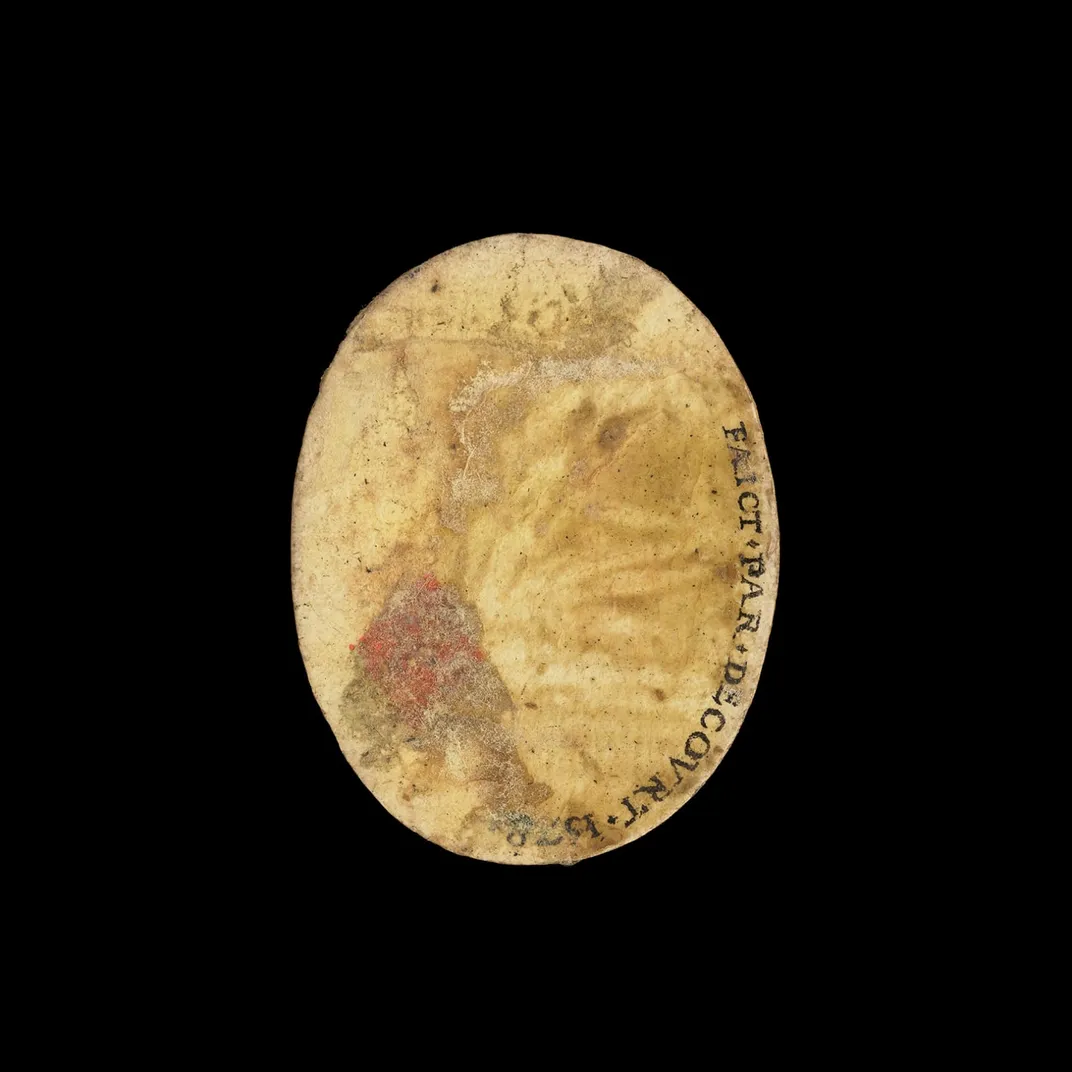Petite Portrait of Henry III, King Who Challenged Sexual Norms in 16th-Century France, Discovered
Art dealer Philip Mould purchased the miniature “sight unseen” during lockdown. Now, he’s offering it to the Louvre Museum in Paris
:focal(1150x537:1151x538)/https://tf-cmsv2-smithsonianmag-media.s3.amazonaws.com/filer/de/62/de62ff67-42f3-42d4-9500-a93367fe13ba/screen_shot_2021-01-27_at_84434_am.png)
Last year, British art dealer and broadcaster Philip Mould purchased a rare miniature portrait sight unseen.
Though the seller had listed the work as a likeness of Elizabethan adventurer Sir Walter Raleigh, Mould had his doubts.
“From what one could tell, [this portrait] had an appealing and curious aspect … which required further investigation,” he tells the Telegraph’s Dalya Alberge.
The “Fake or Fortune” host’s hunch regarding the petite painting’s provenance proved correct. As Sherna Noah reports for the British Press Association (PA), research conducted by Mould and art historian Celine Cachaud has identified the work’s subject not as Raleigh, but as Henry III, the controversial Valois king who ruled France between 1574 and 1589.
In addition to confirming the portrait’s sitter, the analysis revealed concrete evidence of the painting’s authorship. Per a statement from the art dealer’s London gallery, Philip Mould & Company, when a conservator removed the two-inch-tall work from its locket-like frame, they found a surprise on its back: the date 1578 and the signature of Jean de Court, an acclaimed court painter who also produced portraits of Mary, Queen of Scots, and Elizabeth I.
“We can now firmly and finally imprint 16th-century royal portraiture with de Court’s name,” says Cachaud, a portrait miniature specialist at the Paris National Institute for Art History, in the statement. “This groundbreaking discovery will have a major impact on the study of late Valois portraiture and miniature painting in years to come.”
Mould tells the Telegraph that European courtiers often commissioned portrait miniatures as tokens of love or intimate gifts. As Artnet News notes, de Court’s image of Henry shows the ruler wearing a strings of jewels, a bonnet and a shirt with elegant white ruffles—a depiction similar to the few extant portraits of the French king. (Henry’s face was “all but wiped from history” following the French Revolution, as it was dangerous to own royal portraits in the new republic, Mould tells the PA.)
Henry reigned during a turbulent period in French and Polish history. Many historians argue that his reign escalated the Wars of Religion (1562–98), a prolonged conflict between Protestants and Catholics in the region, according to Encyclopedia Britannica.
Historians continue to debate the exact nature of Henry’s sexuality. Evidence exists that he had sexual relationships with both women and men, and that he employed a number of mignons, or male favorites, in his court, writes Laurence Senelick for the Gay and Lesbian Review.
Accounts penned during Henry’s lifetime offer additional insights on the king’s personal life. Diarist Pierre de L’Estoile, for instance, complained that Henry frequently wore women’s clothing and kept a coterie of male companions. Per the statement, L’Estoile wrote that the king lavished money and attention on his mignons, who wore “their hair long, curled and recurled by artifice, with little bonnets of velvet on top of it like whores in the brothels, and the ruffles on their linen shirts are of starched finery and one half foot so long so that their heads look like St. John’s on a platter.”
/https://tf-cmsv2-smithsonianmag-media.s3.amazonaws.com/filer/a5/57/a5577c5c-229d-4c06-8dda-1b47c27b5aa7/jean_de_court.jpg)
Writing in the Journal of the History of Sexuality in 2003, scholar Katherine B. Crawford argued that many of Henry’s political opponents painted his sexuality as deviant in order to discredit him. In early modern France, sodomy was considered a mortal sin and a criminal offense, although it was rarely prosecuted.
“Throughout his reign,” the historian explained, “negative readings of Henry III’s sexuality were available for use against him whenever the political situation allowed.”
Crawford added that these polemics about may have strongly influenced the fanatical monk Jacques Clément, who fatally stabbed the king on August 1, 1589.
According to the Telegraph, the miniature’s original auction estimate is believed to have been “in the high hundreds of pounds.” Its true value is now thought to be closer to several hundreds of thousands of pounds.
Mould has offered first refusal of the work to the Louvre Museum in Paris.
“This work is a French national treasure—a hugely significant unpublished image of a misunderstood king, and confirmation of Jean Decourt’s immense talent,” says Mould in the statement. “It would be wonderful if it could ‘come home’ to Paris, as I believe that is where it truly belongs.”
/https://tf-cmsv2-smithsonianmag-media.s3.amazonaws.com/accounts/headshot/nora.png)
/https://tf-cmsv2-smithsonianmag-media.s3.amazonaws.com/filer/40/a4/40a49d13-5745-4281-aaef-739b7dfe325a/jean-decourthenri-iii-1024x1024.jpeg)

/https://tf-cmsv2-smithsonianmag-media.s3.amazonaws.com/accounts/headshot/nora.png)